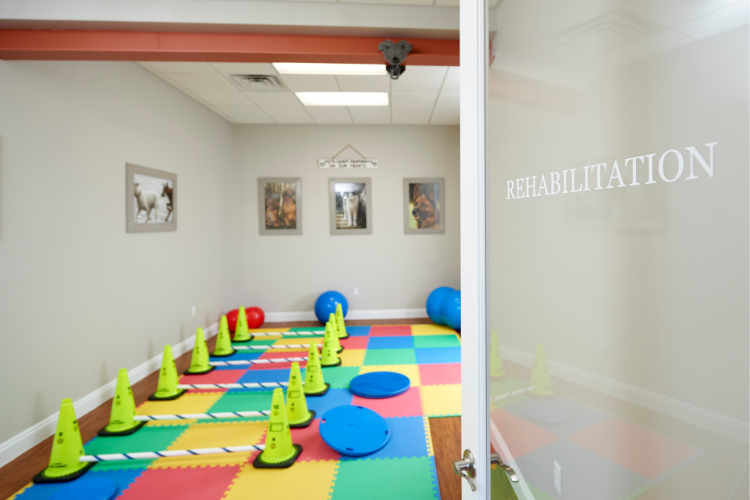While some of our clients may want their pets to live forever, it's perhaps a more important consideration that they remain happy and comfortable in the time they are privileged enough to enjoy one another.
Every single day in veterinary clinics, a senior pet is examined, and their story is told. One memorable summer day a long time ago, a special senior poodle patient named Chloe that had weathered some of the most difficult storms with her owner - including the loss of her husband - came in for a check-up. We sat and talked, and I examined Chloe, and with much emotion, we talked about wanting what is best for her but not wanting her quality of life to decline. My client did not really want to think of life without her!
With medicine evolving in amazing ways, we see more of these older animals living longer. We hear it over and over: "They are not just a dog. They are my reason to get up in the morning, to go on a walk. They are the one that listens to my jokes and my secrets!" So, it's quite stressful on an owner's mind and heart when they start to see the changes in their pet's activity, energy, and playfulness. This begs the question we all ask ourselves when managing these types of cases: Where do we begin to help preserve the quality of life for the senior dog that develops chronic pain, and the lifestyle changes that follow?
1. Active listening and transparent communication
The first step is communication! It cannot be stressed enough that listening to our client's "story," truly hearing their concerns an expectations, is incredibly important to developing a pain management plan. By listening to our clients, we can provide reassurance that their concerns and their dog's issues are understood and heard.If the time is taken to educate clients on the cause of their pets' change in activity and cause of chronic pain as well as the expectations of different treatment options, this can help reduce frustrations and build trust while navigating a plan or change of plans.
Recheck appointments and phone consultations should be encouraged to keep that line of conversation open, and ensure that the treatment envisioned is working for their dog. Communication isn't just important, but utmost transparency in your communication is vital so that clients are not misled in their plan of action towards the pet's overall health.
2. Educating about symptoms
Educate the owners about the symptoms that are subtle, but can give important insight into the signs of chronic pain with aging. As dogs reach roughly 7 years of age depending on the size and breed, they can be considered a mature or senior pet.On their visits to the veterinary clinic, owners can fill out questionnaires on symptoms of aging and arthritis during a wellness visit, or simply talk to their veterinarian and technician to assess and educate them on the small changes that can indicate chronic pain.
Does your dog...
- Have a limp?
- Have trouble posturing to urinate or defecate?
- Have trouble standing after sleeping?
- Have trouble going up or down stairs?
- Have loss of muscle mass on limbs and spine?
- Have lethargy or a decrease in playfulness?
- Yelp in pain when picked up or groomed?
3. Collaborating on a treatment plan
How do we choose the right treatment plan for these senior dogs, to get the skip back in their step? There is not just one answer to this question. Consider the following, when preparing a management protocol:- Are there any underlying problems? (Consider blood work, urinalysis, and radiographs to assess health)
- Is the owner comfortable giving medication?
- Are there any cost restrictions that keep the owner from certain medications or treatments?
Choosing which NSAID may depend on the health and tolerance the dog has for the prostaglandin pathway that is inhibited, the frequency of dosing, the availability of generics, and cost. These medications can be standalone treatments, or used in conjunction with other medications and alternative therapies to have a multimodal approach. Combination therapies can target different stressors on the arthritic joints and more effectively control pain.
4. Reviewing alternative therapies
Alternate therapies to discuss with your clients may include:- Weight loss to reduce strain on joints
- Joint supplements that include glucosamine and chondroitin
- Anti-inflammatory supplements such as Duralactin that naturally reduce inflammation in joints
- Omega 3 fatty acid, which has shown to have anti-inflammatory properties
- Medications that can be combined wiht NSAIDS (gabapentin and opioids)
- Intra-articular join injections
- Mild exercise to keep joints moving
- Orthopedic bedding
- Accupunture, chiropractic medicine, and laser therapies
- Prescription diets that target joint disease
Arthritis in senior dogs cannot be cured, but with a combination of treatment options, our loyal four-legged family members can live long lives filled with quality and spirit. Chronic pain in our older pets does not have to be the "norm." It must be recognized and treated according to baseline health and the activity level of the pet. The goal of treatment is not to grant immortality to our pets, but perhaps just a few more moments to share and dwell in the bliss of having our most trusted companions.
As for Chloe, she gave her owner three more happy, adventurous, and quality years. She was managed with NSAIDS, a joint diet, and anti-inflammatory joint supplements. Her pace was a little slower, her walks were a little shorter, and she learned to use a ramp instead of stairs. Her loyal owner accepted Chloe's new pace with gratitude. She had a happy and energetic companion to listen to her stories and share her days. And that is what brings joy into the lives of pets, clients, and veterinarians!
Share
Related blogs

Revolutionizing Veterinary Ophthalmology: Enhancing Ocular Health with Innovative Tear Film Solutions
In this blog, we will delve into the layers of the tear film, its essential functions, causes of Dry Eye, causes of Corneal Ulceration, and revolutionary solutions like BioHanceTM and Sentrx Animal Care Ophthalmology Products.

Puddin's Story
A behavior case study focusing on medication choices, training programs, setbacks, and recovery.

Physical Rehabilitation Therapy and the Role Owners Play with Supplementation
RVTs Lauryn Harker and Tiffany Downing of Canine Rehabilitation of Orange County share 3 illuminating case studies which illustrate that the combination of customized Physical Rehabilitation Therapy, supplements, and diet can mean all the difference in patients outcomes and overall quality of life.
